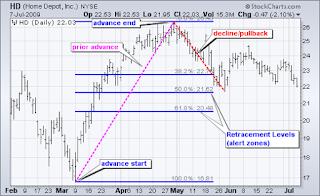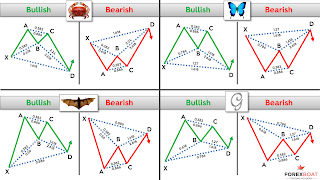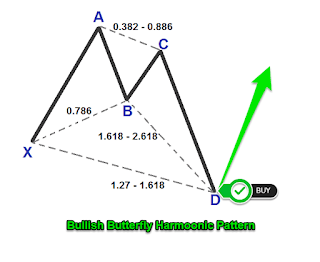FIBONACCI – Retracements
FIBONACCI – Retracements
-A Forex Trading
Perspective-
Fibonacci is an analytical tool which was invented in the 13th
century by “Leonardo Pisa”.
In Forex trading, the Fibonacci is
one of key tools that assist traders in determining when is the right time to
buy or sell. It provides traders with reliable information on what the market
has been doing and what it intends doing next – through Retracements as an
example.
In Forex trading, Retracement can be
defined as; price correction (pull-back) during an impulse or larger (up-ward
or down-ward) trend. Retracements are simply price corrections rather than
actual trend reversals.
However, as pull backs, Retracements
act as an opportunity for traders to enter trades in their original direction,
but take advantage of better prices during the retracement periods.
Characteristically, a Retracement is
followed by an impulse move which carries on in the original direction.
Therefore, they provide a temporary opportunity for traders to buy at cheaper
price or sell at higher price.
NB:
-The best point to buy is following
a pull-back while the trend continues to rise.
–The best point to sell is
following a pull-back while the trend continues to fall.
A Fibonacci Zone (Fib-zone)
is an area within Fibonacci, situated at around 50% to 0.618% level. This is
the area where retracements (pull-backs/ price correction) usually end and from
where new impulse moves usually begin.
However, sometimes pull-backs do
slightly fall short or exceed the Fibzone area, for instance where an
impulse-move is too steep (almost vertical in shape) that its correction
/pull-back/retracement is shorter and ending at around 38%, instead of the
normal 50% – 0.61% level.
Similarly, Retracements can go past the
Fibzone, indicating that it is no longer a price correction or pull-back but an
actual change in direction of the trend hence, time to plot a new Fibonacci in
the opposite (now current) direction.
Mind you, Fibonacci can be plotted
during two scenarios or directions: –
1) Down-Up – in an upward
trend/move:
In this case, Fibonacci is
drawn/dragged from the last significant low (swing low) to the most recent high
(swing high).
In other words; it is dragged from
the tip of the recent bottoms to the peak of the recent highs on the chart.
2) Up-Down – in a downward
trend/move:
This is where Fibonacci is dragged
from top to bottom of a trend chart.
In other words; it is drawn from the
peak of recent highs to the bottom of recent lows.
It is equally important to note that
the essence of Fibonacci-Retracement analysis is to measure trend impulses in
relation their pull-backs (retracement), so as to determine if a particular
retracement is just temporary correction or a definite change in direction of
the trend.
But just as is the case with all
other indicators, a trade should not be entered until the outcomes of the
Fibonacci analysis are confirmed by other analytical tools, such as the
appearance of retracement candlesticks (eg. the hammer) on specific points, as
well as confirmations from indicators like RSI (over-bought or over-sold
conditions) and MACD (above or below Zero) among others.
The trader must be able to apply
several analytical tools in order to build a case for entering the market.
And always look at the Structure of
the trend, particularly on the left of the structure for clues! As the popular
saying goes; “Look left! Structures leave Clues!”.
It is widely believed that; markets
trend 30% of the time, and they are in consolidation 70% of the time. Consolidation
is the period when markets move up and down along (within) the same price
levels. This means that those who understand and effectively use their
analytical tools make money during the 70% of market consolidation.
In all, Fibonacci is a key item in
the Forex trader’s tools box, for it informs the trader on what the market is
doing and what it intends to do going forward.
Compare: Fibonacci Retracement with Fibonacci Extension
(Profit Targets).
OJ
Mwale – Sani Global - Forex
Check the links below, you may find
them useful: –
https://tinyurl.com/ycxm8wv2




Comments
Post a Comment